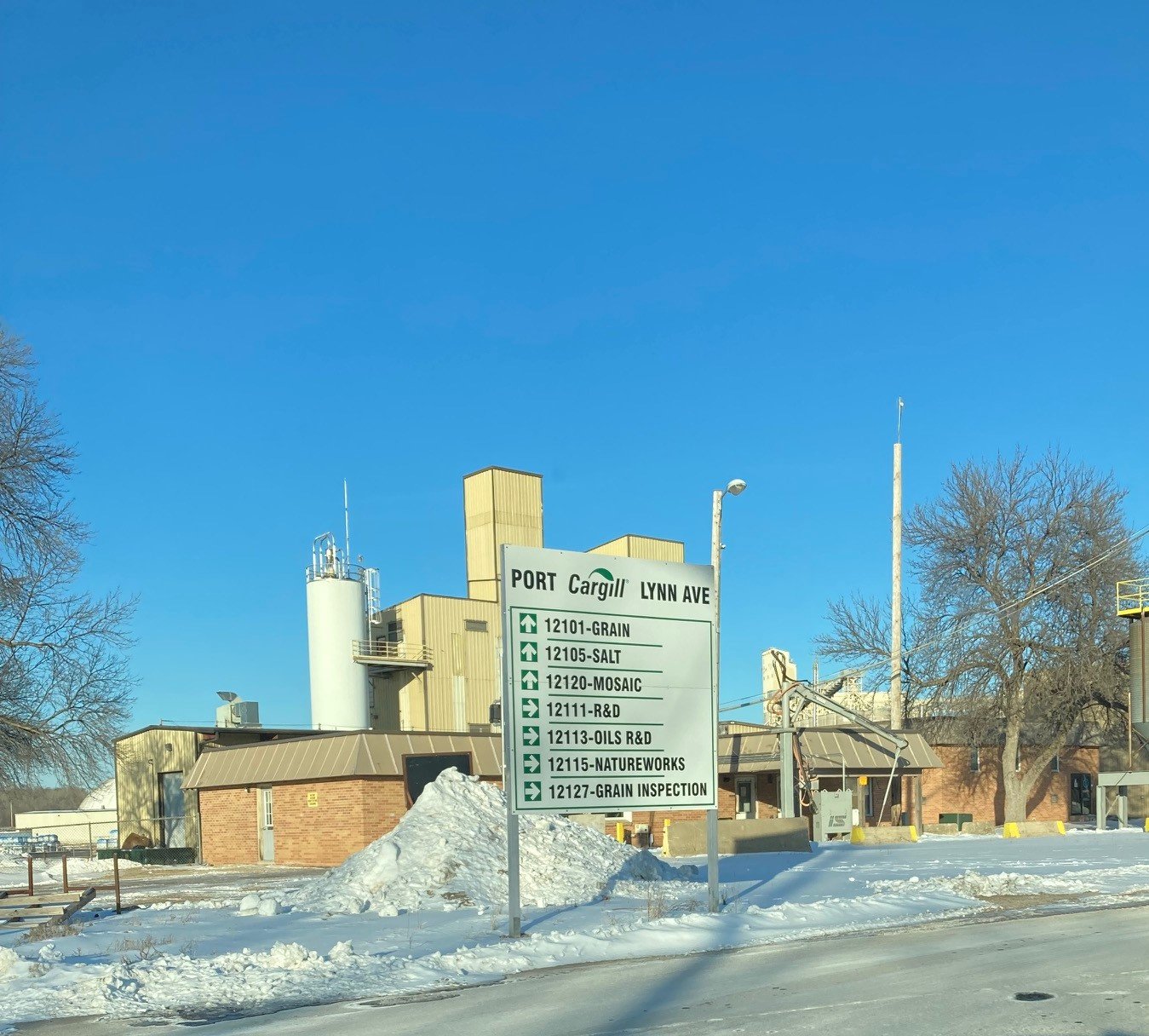This post was written by guest blogger Charles Pederson. If you would like to write for our blog, contact us at info@scottcountyhistory.org
Welcome to Part 1 of a three-part story about a little-known episode in Scott County History: the Savage Shipyards and Port Cargill.
Picture a 1944 black-and-white newsreel: At water’s edge, a gargantuan gray warship, ready for launch at the riverbank. A small group of dignitaries stands on a nearby reviewing stand. The ship’s sponsor, bottle of champagne in hand, swings the bottle out on a delicate ribbon toward the ship. A spray of bubbles where the bottle breaks, a rousing cheer from a crowd of onlookers, and the ship immediately slides with a massive roaring splash sidelong into the river. Another weapon in the arsenal of democracy has been launched.
During World War II, this scenario was repeated in shipyards throughout the United States. Big impressive coastal shipyards fabricated big, impressive seagoing vessels. On a smaller scale, Savage, Minnesota, got in on the action as well. Savage was already doing its share to fight fascism in the Pacific Ocean during World War II, at the U.S. military’s Japanese language school, Camp Savage. Port Cargill and the Savage Shipyards would become another way this small town contributed in big ways to the war effort.
Port Cargill, also known as the Ports of Savage, continues to serve as transit point for commodities. The modest entry belies a little-known history. Courtesy of Charles Pederson, with thanks to Cargill Inc.
Out of Depression and Into the War Years
The U.S. Great Depression (1929–1941) had caused the country to pull back into itself. Tired of foreign wars and exhausted by economic disaster, most people wanted to forget about the world’s problems and just go about surviving. For years, many people had believed that getting mixed up in other countries’ problems would be a mistake.
When war broke out in Europe in 1939, the U.S. Congress was intent on maintaining U.S. neutrality. Franklin Delano Roosevelt (FDR), however, pushed back. In one of his cozy “fireside chats,” he asserted that when there is war anywhere, “the peace of all countries everywhere is in danger. . . . I cannot ask that every American remain neutral in thought.” He began a steady push to increase war production and help the Allies in Europe.
Naturally, increasing wartime production wasn’t as easy as just turning on a faucet. In 1941, FDR knew that to switch to a war footing would be “no small task. And the greatest difficulty comes at the beginning of the program, when new tools, new plant facilities, new assembly lines” are laid out. He was particularly interested in shipping. “New [shipyards] must first be constructed before the actual materiel begins to flow steadily and speedily from them.”
Gearing Up to Manufacture Shipping
In the mid-1930s, only about 10 U.S. shipyards were turning out vessels fit for war. By 1942, the deadly German submarine fleet was sinking more ships than the U.S. could produce. Not, however, until the Japanese military attacked the U.S. naval base at Pearl Harbor did most Americans realize the national danger. The attack awoke the U.S. “sleeping giant.”
Roosevelt believed his fellow citizens were ready to hear his exhortation. A month after the attack, FDR advocated increasing the number of merchant ships from 1.1 million in 1941, to 6 million in 1942, to 10 million in 1943. “These figures and similar figures for a multitude of other implements of war will give the Japanese and the Nazis a little idea of just [how little] they accomplished in the attack at Pearl Harbor,” he said in his State of the Union address.
The U.S. military began looking for additional shipbuilding facilities. Among the vessels needed were tanker ships called auxiliary oilers and gasoline haulers (AOGs). The Navy, still worried about Japanese attacks on the West Coast, found that inland shipyards were desirable. And Minneapolis-based Cargill company was ready to help meet the desire.
Sleepy Rural Village to Bustling Work yard
Cargill was a large company known primarily for shipping grain. High grain-shipping costs during the Depression had already spurred Cargill executives to design their own novel multiunit grain barge. But the unfamiliar new design caused shipyards to shy away from fabricating that crazy contraption. So in 1937 Cargill created its own makeshift shipbuilding facility at its Albany, New York, grain yard. Along with its 300-foot barge system, the Albany shipyard turned out the tanker ship Victoria. Completed in 1941, the Victoria was sold to the Argentine government, “in time to become the first Argentine ship torpedoed in World War II,” wrote a Time magazine journalist.
Shipmakers may have been leery of the barge, but it captured the interest of the U.S. Navy. After seeing Cargill’s efforts in New York, it negotiated with Cargill to build naval vessels. In a Time article, a Cargill executive stated, “That’s how we got into ship building and ocean transportation, because the U.S. government asked us.”
Rather than expand the makeshift yard in Albany, Cargill zeroed in on the village of Savage, Minnesota, in northern Scott County on the Minnesota River. The shipbuilding equipment would be physically moved from Albany to the town, which had much to recommend it. First, it was near a handy source of labor in Minneapolis. Second, the proposed shipyard was far from the coasts and insulated from Japanese attack. Finally, Minnesota was already well advanced in war production. All conditions satisfied the Navy.
Cargill quietly began to purchase land for the enterprise.
Thanks for reading Part 1, the roots of Port Cargill. Part 2 (of three parts) focuses on the crazy idea of plopping a shipyard in the middle of Minnesota. Part 3 will delve into how the ships were built, how they entered wartime service, and what became of them.




